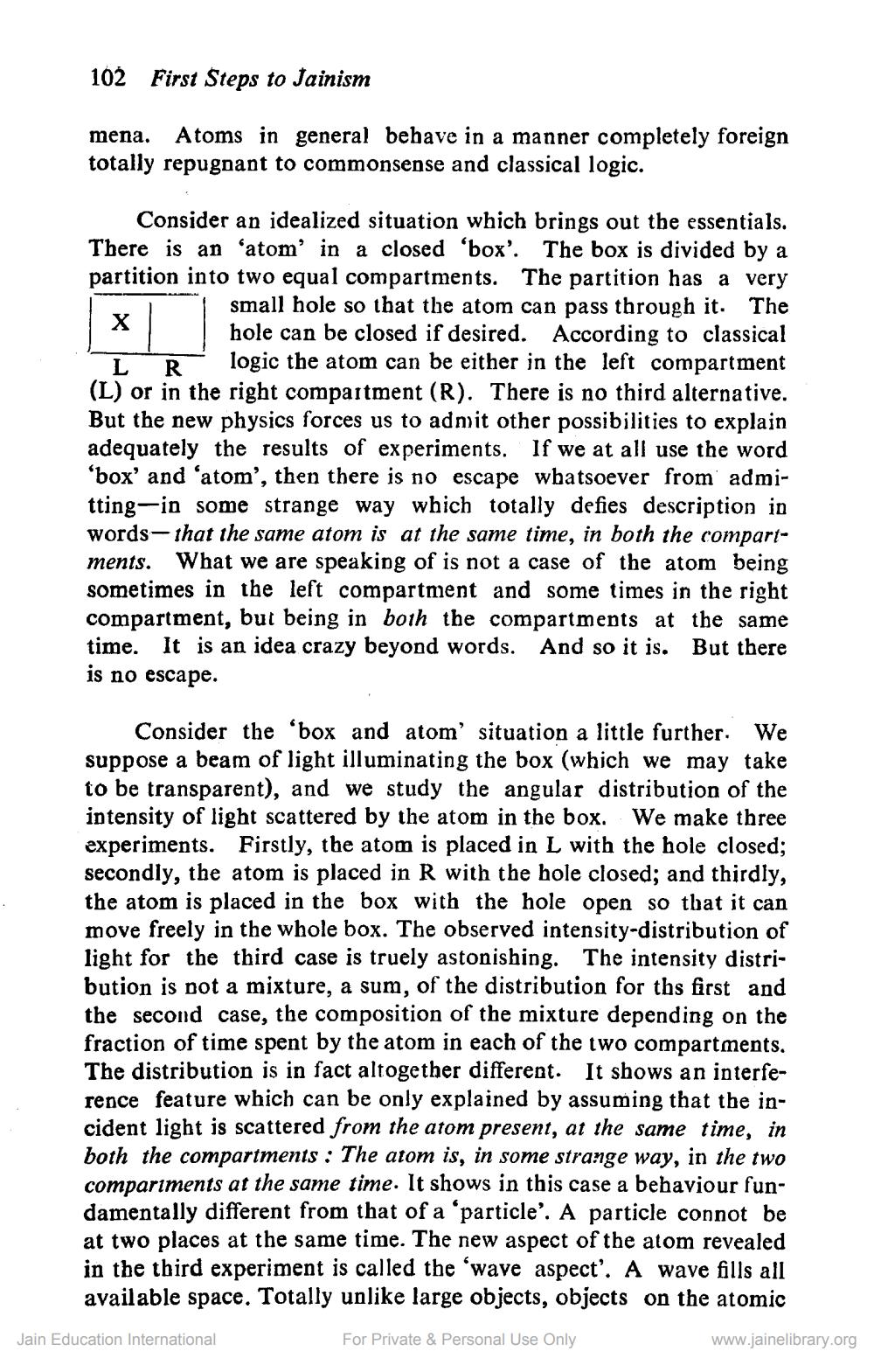________________
102
First Steps to Jainism
mena. Atoms in general bebave in a manner completely foreign totally repugnant to commonsense and classical logic.
Consider an idealized situation which brings out the essentials. There is an “atom' in a closed 'box'. The box is divided by a partition into two equal compartments. The partition has a very
small hole so that the atom can pass through it. The
hole can be closed if desired. According to classical L R logic the atom can be either in the left compartment (L) or in the right compartment (R). There is no third alternative. But the new physics forces us to admit other possibilities to explain adequately the results of experiments. If we at all use the word 'box' and 'atom', then there is no escape whatsoever from admitting-in some strange way which totally defies description in words that the same atom is at the same time, in both the compartments. What we are speaking of is not a case of the atom being sometimes in the left compartment and some times in the right compartment, but being in both the compartments at the same time. It is an idea crazy beyond words. And so it is. But there is no escape.
Consider the 'box and atom' situation a little further. We suppose a beam of light illuminating the box (which we may take to be transparent), and we study the angular distribution of the intensity of light scattered by the atom in the box. We make three experiments. Firstly, the atom is placed in L with the hole closed; secondly, the atom is placed in R with the hole closed; and thirdly, the atom is placed in the box with the hole open so that it can move freely in the whole box. The observed intensity-distribution of
for the third case is truely astonishing. The intensity distribution is not a mixture, a sum, of the distribution for ths first and the second case, the composition of the mixture depending on the fraction of time spent by the atom in each of the two compartments. The distribution is in fact altogether different. It shows an interference feature which can be only explained by assuming that the incident light is scattered from the atom present, at the same time, in both the compartments : The atom is, in some strange way, in the two compariments at the same time. It shows in this case a behaviour fundamentally different from that of a particle'. A particle connot be at two places at the same time. The new aspect of the atom revealed in the third experiment is called the 'wave aspect. A wave fills all available space. Totally unlike large objects, objects on the atomic
Jain Education International
For Private & Personal Use Only
www.jainelibrary.org




